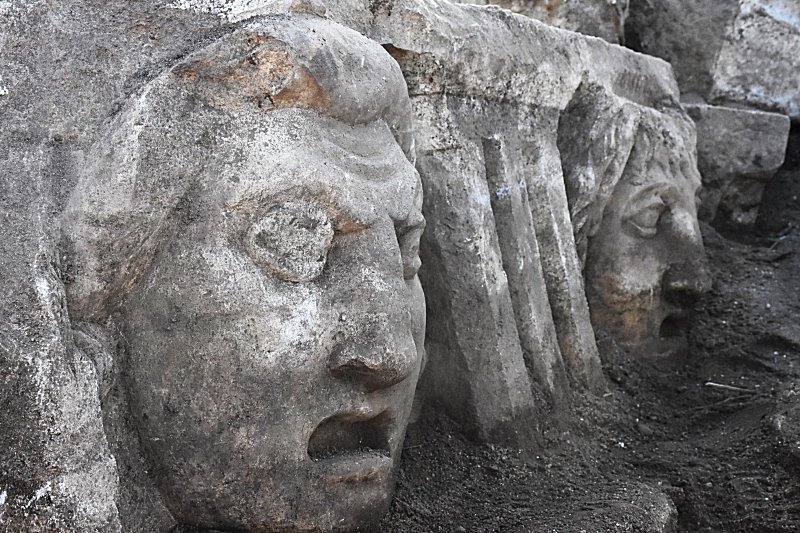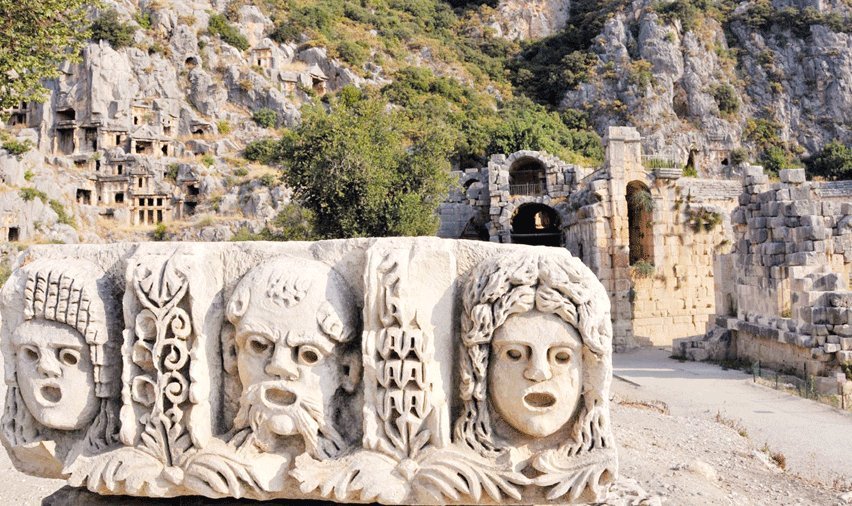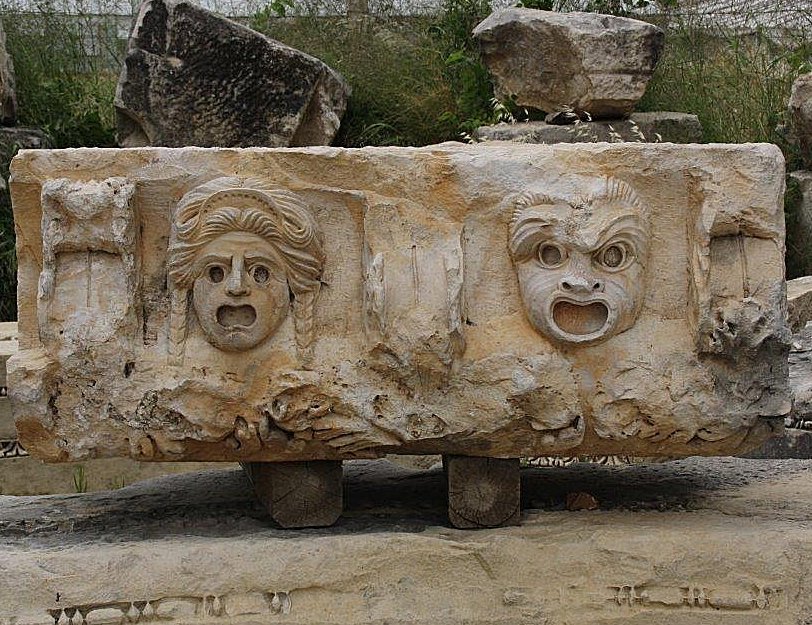Conny Waters – AncientPages.com – Archaeological excavations carried out in the 3,000-year-old ancient city of Stratonikeia, have revealed 10 more masks decorating the stone blocks that are believed to date back 2,200 years.
Works in the ancient city, located in the Yatağan district of the western province of Muğla, have been ongoing for a year with a team headed by Pamukkale University Professor Bilal Söğüt.

Two masks in the ancient city of Stratonikeia, Muğla, southwestern Turkey, Nov. 24, 2020. Image credit: AA
The ancient city of Stratonikeia is an old city with historical records going back 3,000 years. It played host to many civilizations that left artifacts belonging to the Hellenistic, Roman, Byzantine, Beylic, Ottoman, and Republic periods. The mythological masks carved on the blocks of stone were found in the area where the stage building of the 2,200-year-old ancient theater is located, writes Hurriyet Daily News.
The excavation team previously unearthed 33 masks in the last two years that were exhibited after the completion of their cleaning and repair processes, and now the number has reached 43 with the discovery of recent masks, Professor Söğüt told Anadolu Agency.
These fascinating mythological masks express so many different both positive and negative feelings. In ancient times, they were used in theatrical performances at that time and the depictions of gods, goddesses, and animal figures belonging to the ancient period adorned these masks. Ancient highly skilled artists had an important goal with their work: to make very strong impressions on theater visitors.
“We have been working in the ancient theater with the support we have received for two years. We have been carrying out archaeological excavations and restoration works in the ancient cities of Stratonikeia and Lagina. We have made arrangements in the square,” he said.
See also:
Ancient Greek Costumes, Masks And Theater In Focus
The unearthed masks surrounded the state-building, and now, when people come here, they are impressed by seeing the splendor and flamboyance of the theater before they even enter it. Accordingly, we now reveal the richness and splendor of that period, the value they gave to culture, art, and architecture,” Professor Söğüt commented.

Ruins of Myra’s famed theater. Image credit: Demirören News Agency
Similar masks were also discovered in other places ᴀssociated with the theater-related activity. A year ago, an ancient city approximately 1.5 kilometers in diameter was unearthed, from four to 10 meters below the surface in Antalya’s Demre district.
In the ancient town of Myra in the Lycia region of Anatolia, modern-day Turkey there are several spectacular ruins. The rock-cut tombs of Lycia are one of the finest examples of ancient peoples’ ingenuity in the form of the magnificent rock-cut tombs of the ancient Lycian necropolis. Two burial sites, the river necropolis, and ocean necropolis, with frontages resembling classical temples, have been hewn from the cliffs located above the town.
 Image credit: Demirören News Agency
Image credit: Demirören News Agency
The rock-cut tombs of Lycia are one of the finest examples of ancient peoples’ ingenuity in the form of outstanding tombs.
In 2019, the magnificent theater for 11,000 people was found among many other well-preserved ruins of the acropolis, Roman-era monumental theater, Byzantine-era Saint Nicholas Church, Port Andriake, purple paint-production facilities, water canals, cisterns, baths, agora, churches, 2,300-square-meter granary, and more.
Excavations in Myra, an ancient metropolis of the Lycian Union, and the Andriake Port situated in Demre, Antalya, Turkey revealed some of the most important ancient sites of the Lycian Union.
Written by Conny Waters – AncientPages.com Staff Writer





